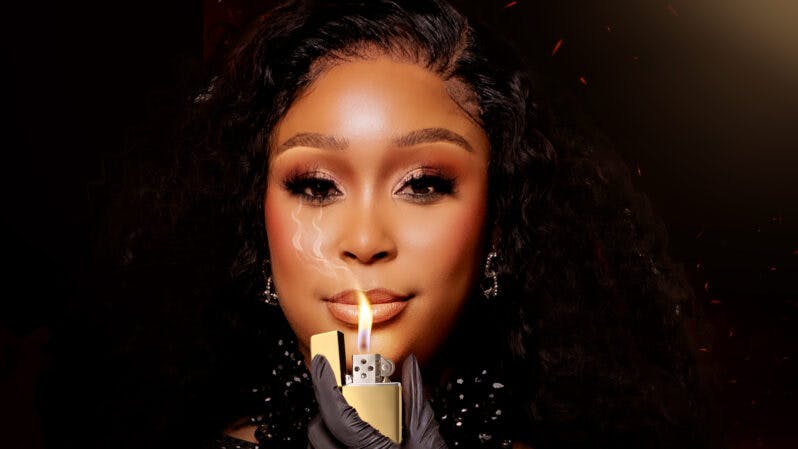
19 September 2018
Stream Ocean Adventurer for fascinating family viewing
The winner of 2017’s Best Factual Education Programme SAFTA Ocean Adventurer follows marine ecotourism captain David de Villiers and his crew, including first mate Roddy Torr, divers Hanli Prinsloo and Peter Marshall, and experts including marine biologist Mary Rowlinson, conservationist Justin Friedman and shark spotter research manager Dr Alison Kock as they dive around the Southern Ocean, giving adventurers like shark spotter Monwabisi Sikweyiya the chance to get up close with incredible wildlife.
It’s an experience very few of us will ever have in real life, but thanks to Ocean Adventurer’s footage and depth of knowledge, we can find out all sorts of fascinating facts, like these … or just enjoy the sights.
Image 1: Ocean Adventurer makes the point of identifying animals clearly for viewers and provides a quick fact list to help us get to grips with the animals’ sizes and range – as seen in episode 3 when the crew spot some Heavyside dolphins. As we get a rare up-close encounter with the tiny dolphins, the voiceover guides us through what sets them apart from similar animals, and discusses their habits and diet.
Image 2: Monwabisi’s dive in the fog will have your heart pounding in sympathy as this shark spotter frets about how much he looks like a seal in his wetsuit, because he’s an expert on great white sharks’ habit of attacking under conditions of poor visibility. But the scare factor is followed up with Dr Alison talking about how she researches great white sharks and gives details of how individual sharks are tracked on their incredible ocean voyages, including stretches from Cape Town to Australia.
Image 3: And there are tiny comic touches too, like when this blue shark looks taken aback as Dr Alison reveals that blue shark meat is considered “low quality”. Shame.
Images 4, 5, 6: Some moments speak for themselves.
Image 7: The connection between the world’s largest mammals – whales – and some of its tiniest animals – zooplankton – is teased out as David takes marine biologist and ecologist Erika Kean, who’s studied phytoplankton (one of the ocean organisms responsible for producing 70% of the world’s oxygen) for a dive with whales in episode 2. And David reveals how to help identify a southern right whale by the v-shaped plume of water it spouts when it surfaces.

Image 8: What humpback whales can teach us
Image 8: Ocean Adventurer includes an emotional encounter with fishing vessels that has the crew reflecting how destructive humans can be to marine life in episode 1. But the ecological message is balanced out by an eye-opening look at how we’re learning from marine life. In episode 2, Justin Friedman tells us how the rough edges of a humpback whale’s fin helps it to manoeuvre its massive body through the water efficiently – and how this could apply to making things like wind turbines more efficient.
9: And in episode 1, we get to learn a little more about how marine biologists are using new technology to give back, as Mary Rowlinson reveals how studying footage of kelp forests and the amazing amount of life swimming around in them – like the seven gill shark – can replace data taken from fishing to help better understand the state of fish population numbers and diversity in ecological surveys.
So dive in, the water’s fun! The documentary is put together so that you can really launch into any episode with ease and once you’ve seen one programme, you can easily skip over the introduction in any of the other episodes. Stream all three episodes now on Showmax.
The Roast of Minnie Dlamini: The roast everyone's been waiting on
Empini, coming soon
More Mzansi gold

Your initiation into the cool, chaotic world of Wyfie
Feel like we’re almost at midterms but you stopped going to class after you skipped a couple of lectures? Let’s swot up on Episodes 1-24 of Showmax Original Wyfie.

Must-watch trailer for The Showmax Roast of Minnie Dlamini
See the trailer for The Showmax Roast of Minnie Dlamini, premiering on Showmax this Friday, 26 April 2024.

Nambitha Ben-Mazwi stars in Showmax Original Empini
Multi-award winner Nambitha Ben-Mazwi leads new Showmax Original Empini. The action-packed drama series premieres on Showmax 23 May 2024.

Youngins Season 1 episodes 31-33 recap: Revelations
Amo and Mahlatse become a couple, Tumelo ditches Sefako, and Khaya sees both Sefako and Principal Mthembu in a new light in episodes 31-33 of Showmax Original Youngins.








